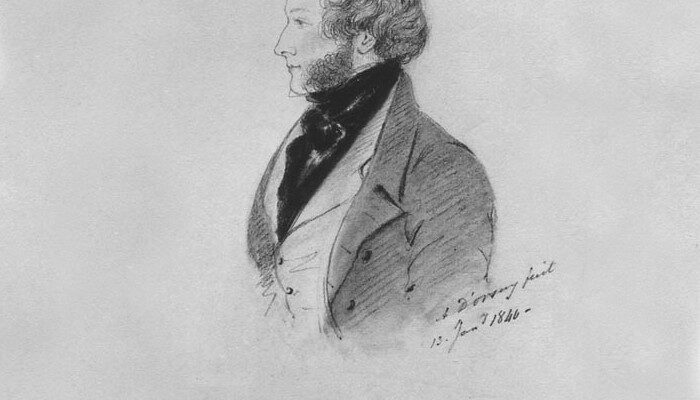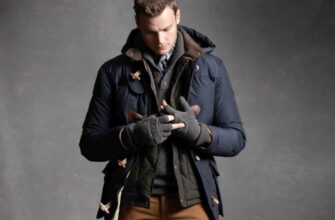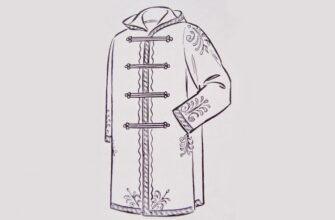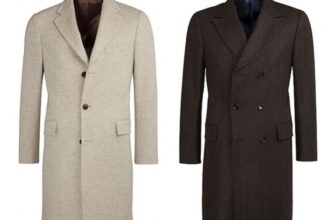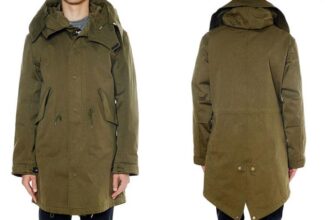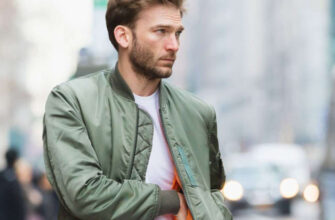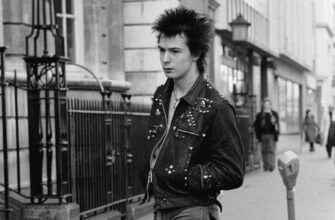A coat is a classic outerwear model, which you can hardly do without in autumn and winter, especially if you prefer (or have to) dress in a business style. Men's coats come in various styles, and we have already told you how to figure them out and choose the one that suits you. Today we will dwell in more detail on one very popular model, to which one would like to attribute 'for true gentlemen' – the Chesterfield coat.
History of the Chesterfield coat
Some sources claim that the first to put on the coat, later called Chesterfield, was the English nobleman Philip Dormer Stanhope, 4th Earl of Chesterfield. For the fashion of that time (and we are talking about the end of the 18th century), such a cut was extremely innovative, but Stanhope – a famous statesman, diplomat and writer – obviously could afford fashionable delights.
Other researchers say that the first to try on the coat was the grandson of the aforementioned earl – George Stanhope, 6th Earl of Chesterfield, and this happened already in the middle of the 19th century. Now we no longer know whether he invented this cut himself, trusted the instinct of a tailor or rummaged in grandfather's chests, but it was with the light hand of Joj Stanhope that a new style coat came into fashion. I must say that he was given all the cards in his hands for this: the 6th Earl of Chesterfield was part of the circle of English dandies, including Lord Byron and the Earl of D'Orsey, the generally recognized fashion gurus of that time.
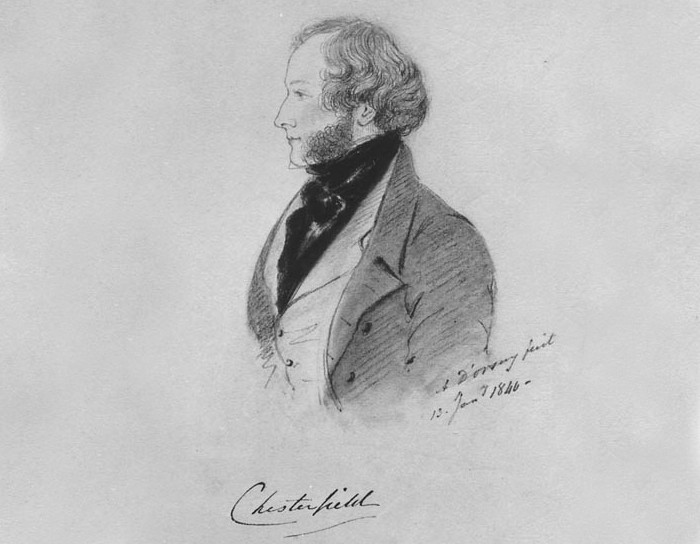 Portrait of George Stanhope, 6th Earl of Chesterfield … in a coat of Chesterfield
Portrait of George Stanhope, 6th Earl of Chesterfield … in a coat of Chesterfield
What was the innovation of the coat of the Earl of Chesterfield? In the 1830s, men usually wore frock coats and tailcoats that combined the functions of street and indoor clothing. They sat quite tightly on the figure and did not act (at least in public places) throughout the day. George Stanhope, in turn, began to wear a coat in the role in which it exists until our time, that is, as a more spacious outerwear that was worn over a suit and filmed indoors.
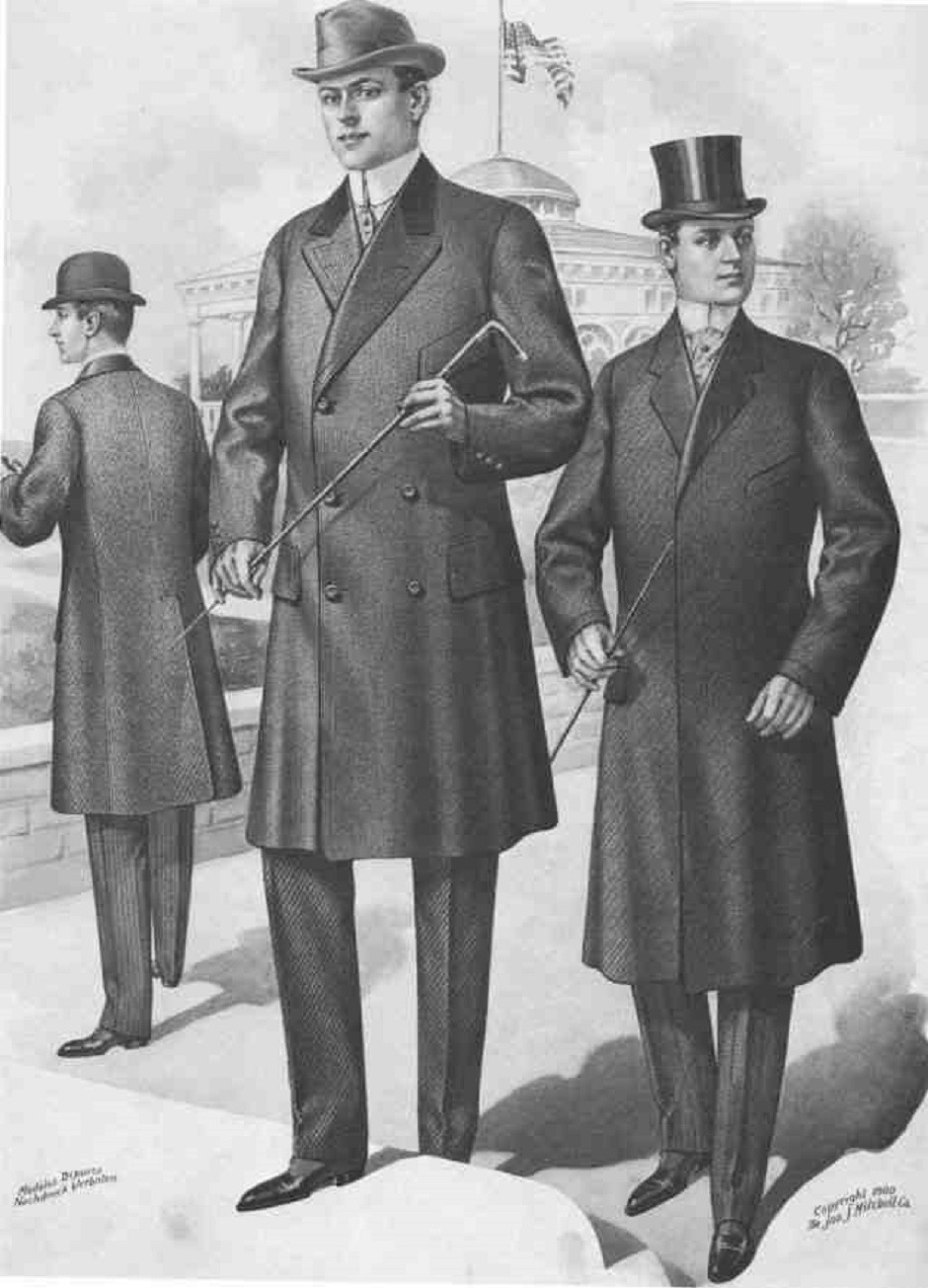 This is roughly what the Chesterfield coat looked like in the 19th century. Can you find 10 differences from today?
This is roughly what the Chesterfield coat looked like in the 19th century. Can you find 10 differences from today?
Distinctive features of the Chesterfield coat
The Chesterfield coat was the first model of a modern men's coat, so for a long time this term was used to denote all types of this garment: single-breasted, double-breasted, made of various materials, etc. This continued until about the middle of the 20th century, when a new terminology for designating various models was in fashion.
These days, a Chesterfield is a single-breasted straight men's coat about knee length with lapels and – often – a velvet collar. There is no specific fabric for this type of coat; it is sewn from dense wool of various textures and patterns. As a rule, classic models are made in dark colors: black, dark gray, etc.
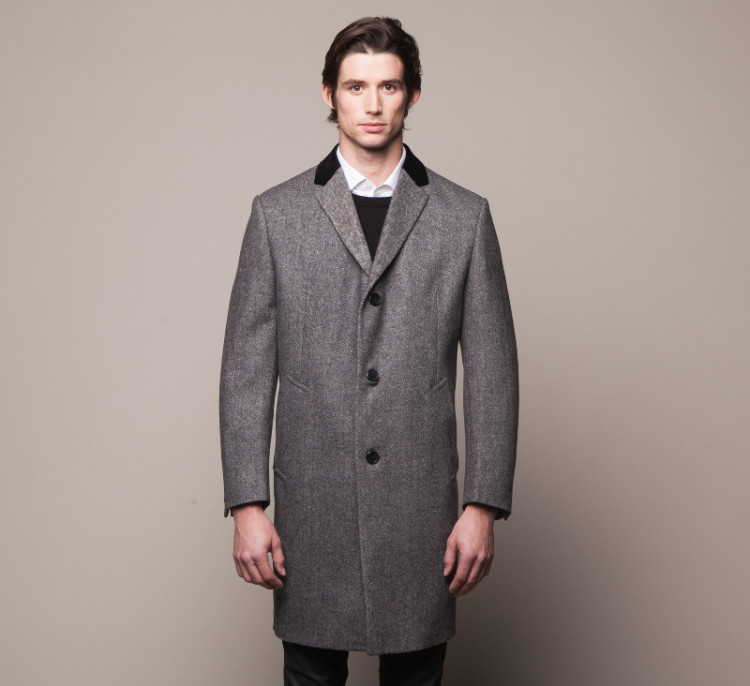 The most classic version of the Chesterfield coat is made of gray wool with a black velvet collar.
The most classic version of the Chesterfield coat is made of gray wool with a black velvet collar.
An important distinguishing feature of the Chesterfield coat is the absence of a belt or tab. In the 19th century, when this model appeared, all outerwear, as a rule, had a fitted silhouette in order to fit more tightly to the figure and keep warm. But since Chesterfield was the first wardrobe item conceived exclusively to be worn over the main suit outdoors (not indoors), the silhouette was chosen more loosely. Nowadays, such a coat is the most comfortable (and even corresponding to the most strict dress code) option for wearing over a business suit.
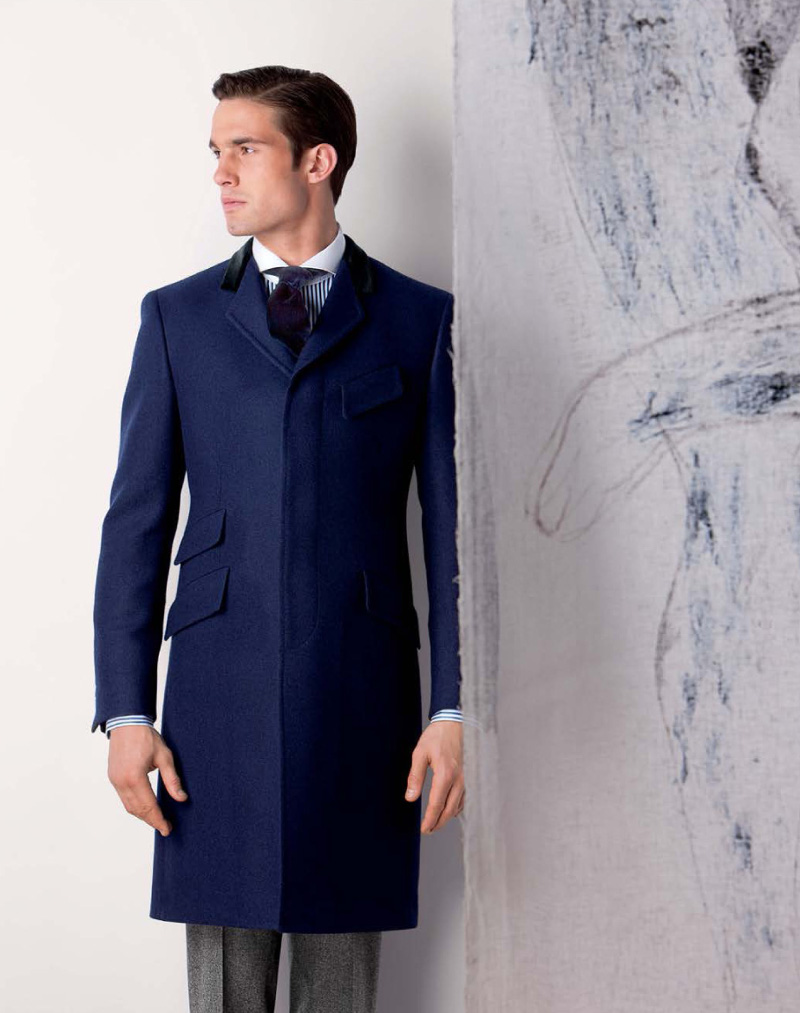 A well-fitting Chesterfield coat is one of the most elegant wardrobe items in men's fashion.
A well-fitting Chesterfield coat is one of the most elegant wardrobe items in men's fashion.
The history of the velvet collar is also interesting, which is still often found on Chesterfield coats, especially when it comes to expensive brands of classic clothing. This detail was in vogue during the French Revolution, and later the British aristocrats began to use it in their costumes as a tribute to their noble ancestors, who were executed in France. This is how the velvet collar got on the first men's coat and remained there until our days. It can be black or some other color, usually different from the color of the main fabric.
So, let's summarize. The classic Chesterfield coat features the following details:
- straight silhouette,
- length approximately to the knee or slightly above,
- single-breasted clasp,
- no belt and strap,
- dark classic color,
- narrow peaked lapels,
- velvet collar (on expensive models),
- straight pockets sewn on top,
- lack of cuffs,
- a small slit in the back.
How to wear a Chesterfield coat
The Chesterfield coat is a business dress code, so the most obvious option is to wear it over a jacket and shirt with a tie. In this case, it is worth choosing high-quality accessories in a classic style for the coat: for example, leather gloves, a silk or fine wool scarf, a scarf for a breast pocket, a business briefcase. You can add a felt hat or woolen cap, but it is better to refuse knitted hats in a sporty style.
Here are some examples of classic Chesterfield coat looks:
 Spectacular business-style accessories: gloves, a scarf in a breast pocket, a hat
Spectacular business-style accessories: gloves, a scarf in a breast pocket, a hat  The suit and coat may well be of contrasting colors.
The suit and coat may well be of contrasting colors.  A thin scarf with a classic pattern is a great addition to a Chesterfield coat
A thin scarf with a classic pattern is a great addition to a Chesterfield coat 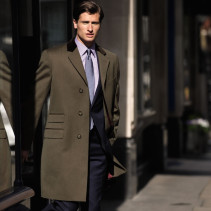 The Chesterfield coat comes in a variety of shades besides the classic black and gray
The Chesterfield coat comes in a variety of shades besides the classic black and gray  A classic look from 50 (well, three) shades of gray
A classic look from 50 (well, three) shades of gray 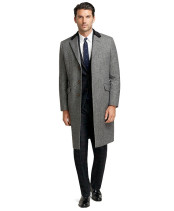 This look is appropriate in any setting.
This look is appropriate in any setting. 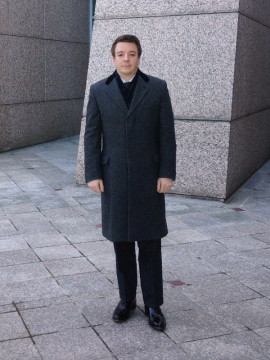 Slightly dark but elegant look
Slightly dark but elegant look 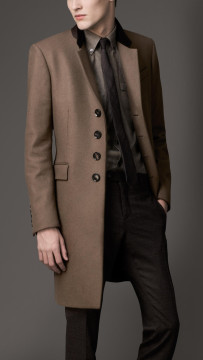 One of the options for reading the Chesterfield coat in the framework of modern fashion
One of the options for reading the Chesterfield coat in the framework of modern fashion  Blue Chesterfield coat – for those who want to stand out, but stay within the dress code
Blue Chesterfield coat – for those who want to stand out, but stay within the dress code 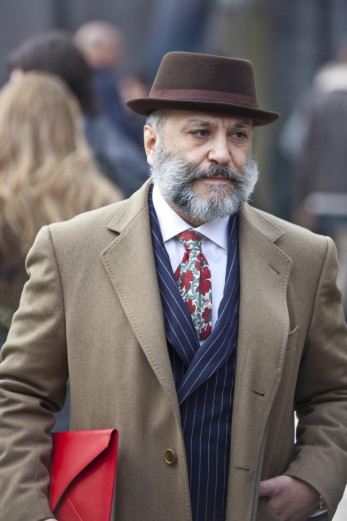 Nothing prevents you from combining a coat and suit with bright accessories, if the dress code permits.
Nothing prevents you from combining a coat and suit with bright accessories, if the dress code permits.  Chesterfield Coat – Agent 007 Style
Chesterfield Coat – Agent 007 Style  A beige Chesterfield coat looks spectacular, but less practical in chilly weather
A beige Chesterfield coat looks spectacular, but less practical in chilly weather
However, the most obvious option in this case is by no means the only correct one. Modern fashion allows for a mix of styles, so if you've got a chic coat, of course you don't have to leave it gathering dust in your closet waiting for your special occasion! It can be worn with a jumper and chinos, or with a shirt and sleek jeans. In this case, you can experiment with accessories, for example, add a bright scarf. The only thing that, perhaps, should still be avoided is clothing and shoes in a sporty style. It is better to choose an autumn jacket for them.
Modern looks with a Chesterfield coat:
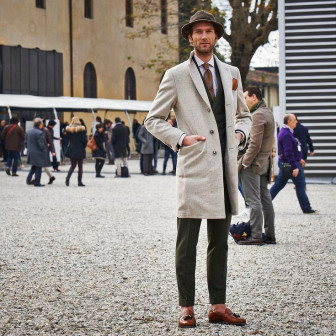 The classic look immediately becomes less boring with cropped trousers and bright accessories.
The classic look immediately becomes less boring with cropped trousers and bright accessories. 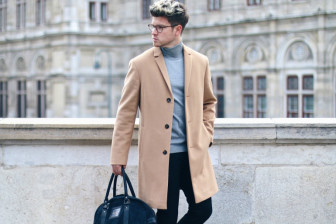 An uncomplicated set for the office in warm autumn
An uncomplicated set for the office in warm autumn 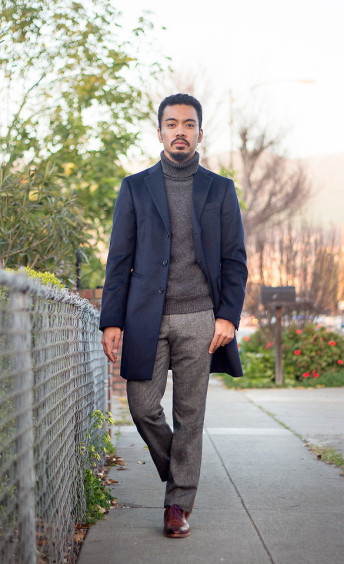 The Chesterfield coat looks great with turtlenecks and high necked highlights
The Chesterfield coat looks great with turtlenecks and high necked highlights 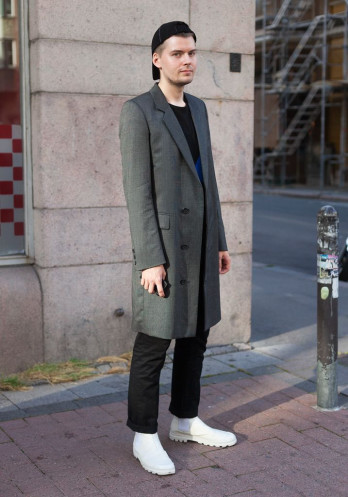 Classic + modern – Chesterfield coat with trendy accessories of the season
Classic + modern – Chesterfield coat with trendy accessories of the season  Chesterfield coat with jeans – a bold move
Chesterfield coat with jeans – a bold move  A little shocking image for those who like to draw attention to themselves
A little shocking image for those who like to draw attention to themselves 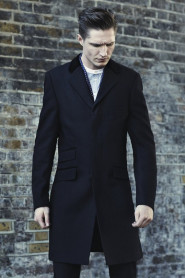 It is not at all necessary to wear a dress shirt under a coat.
It is not at all necessary to wear a dress shirt under a coat.
Conclusion
The Chesterfield coat is a perfect example of that very classic that is always appropriate and never goes out of style. By purchasing this model, you solve the issue of outerwear at any events with a dress code, and also get the ideal basis for spectacular smart casual looks. Do you already have a Chesterfield coat in your wardrobe?

